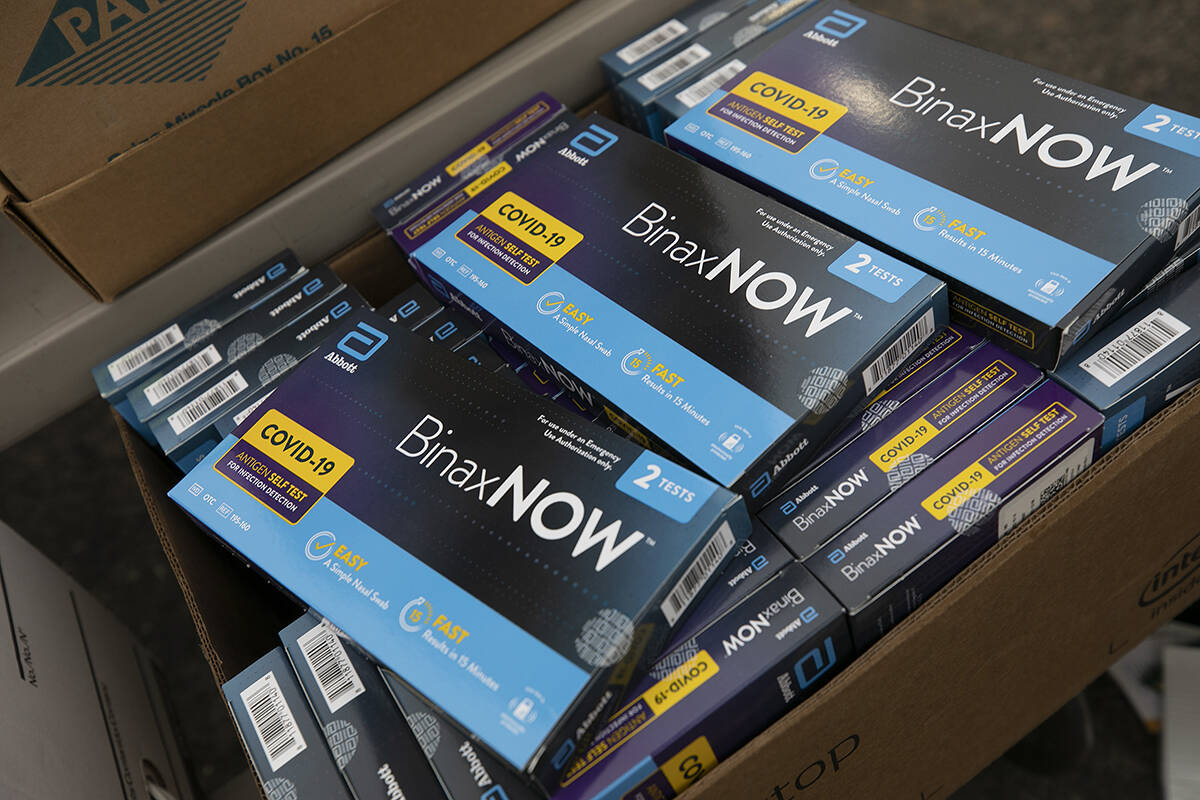COVID-19 reinfections on the rise in Nevada
If you’ve gotten COVID-19 twice, you’re in good — and growing — company. Even if you’ve had COVID four times, you’re not alone. And if you think vaccination necessarily prevents reinfection, think again.
COVID-19 reinfections represented more than 14 percent of cases reported statewide in June, up from about 9 percent in March.
In June, there were 31,520 reported first infections and 5,232 reinfections. Of the reinfections, 5,085 were second infections, 145 third infections, and two fourth infections, according to data obtained from the Nevada Department of Health and Human Services’ Office of Analytics.
These figures include confirmed and probable cases, the former including PCR and molecular test results and the latter rapid antigen test results.
“Multiple reinfections are still uncommon,” said Brian Labus, an assistant professor of epidemiology and biostatistics at UNLV’s School of Public Health. But they’ll become increasingly common as more time passes after infection or vaccination and as built-up immunity fades.
For many, COVID-19 may become like bouts of the flu. “You may not get it every single year, but over the course of your life, you’ll probably get it a few times,” especially if you don’t stay up-to-date on vaccinations, Labus said.
Overall numbers
As of Wednesday, over the course of the pandemic, 758,432 people in Nevada had been infected once, 37,544 twice, 596 three times, 13 four times, and one person five times, according to state data.
The state considers a case a reinfection when a person who tested positive for COVID-19 and has recovered tests positive again at least 90 days after the original test.
State data indicates that for most people, the time between infections is much longer than 90 days. For people who’ve had two infections, the median number of days between infections is 386. For those with three or more infections, the median is 249 days between first and second infections, and 180 days between second and third infections.
Despite the emergence of variants better able to evade built-up immunity, “We’ve not seen reinfections get closer together,” said state biostatistician Kyra Morgan. “The average time … between initial infection and reinfection doesn’t seem to be narrowing over time.”
That the number of reinfections is growing is no surprise, said state epidemiologist Melissa Peek-Bullock. “When you think about, one, waning immunity and then, two, the virus being more effective and efficient at evading the immune responses that our body is still carrying, it is not surprising or alarming to see that we’re having reinfections,” she said.
Vaxxed vs. unvaxxed
The June data suggests that fully vaccinated people had an edge when it came to avoiding reinfection.
The data shows a lower rate of reinfection among the fully vaccinated — those who’d gotten either two shots of the Moderna or Pfizer vaccine or one shot of the Johnson &Johnson vaccine. The fully vaccinated made up about 54 percent of the population in June, but accounted for only 28 percent of that month’s reinfections.
The data also shows that about 40 percent of reported reinfections were in people who hadn’t gotten a single dose of vaccine. Those who hadn’t gotten a single dose made up about 36 percent of the population, meaning that unvaccinated people were slightly overrepresented among the reinfected.
Those who’d initiated vaccination, getting one shot of Moderna or Pfizer vaccine, accounted for 8 percent of June’s reinfections. People who’d gotten a single booster had 22 percent of reinfections, and those with two boosters just 2 percent.
Labus cautioned against reading too much into the data, which he said isn’t representative of cases as a whole. For example, unvaccinated people may have more unreported reinfections than those who are vaccinated. The unvaccinated generally may be less concerned about COVID-19 and less likely to get tested, he said. Also, more and more people are taking rapid tests at home, the results of which aren’t reflected in case counts, skewing the data.
Reinfection deaths
Studies show that people who are vaccinated who contract COVID-19 are less likely to develop severe illness than those who are unvaccinated. But they can still die from the disease.
There were 11 reinfection deaths in June, representing 0.21 percent of reinfection cases. One person had initiated vaccination, four had completed vaccination, one had a single booster and one was twice boosted. Four were unvaccinated.
Labus emphasized that the number of deaths is too small to be a meaningful sample. He noted that those with serious, underlying health conditions are among those most likely to die from COVID-19.
“Even if they had 30 doses of the vaccine, for some of them, the vaccine just doesn’t work because they don’t have an immune system that responds to it,” he said.
No information was available on the health status of those who died in June.
As of Tuesday, of the 38,078 people in Nevada who had at least one reinfection during the course of the pandemic, 134 had died, representing 0.35 percent of reinfection cases. Of the reinfection deaths, 76 were in unvaccinated people, 14 in people who had initiated vaccination, 31 in those who had completed vaccination, 11 in those with one booster dose and two in people who’d received two booster doses.
Contact Mary Hynes at mhynes@reviewjournal.com or 702-383-0336. Follow @MaryHynes1 on Twitter.

















